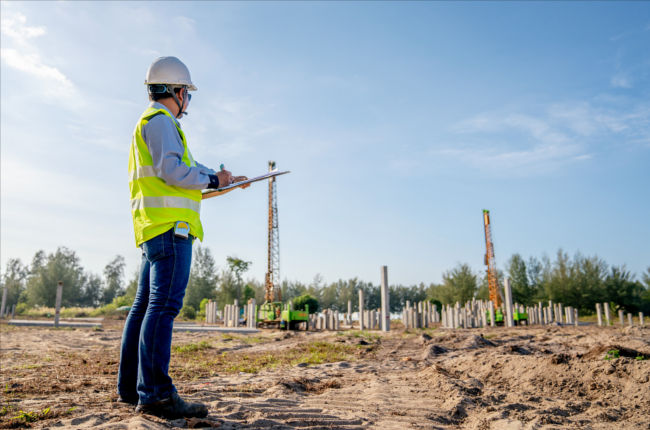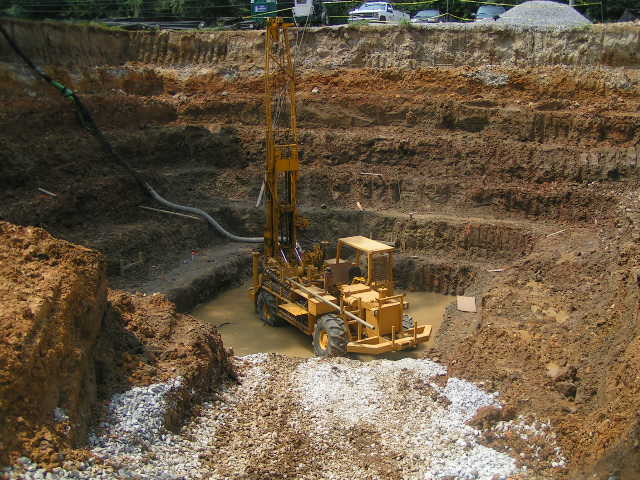Experienced Geotechnical Geologist for In-Depth Ground Investigations
Wiki Article
Just How Consulting Engineers Enhance Geotechnical Design Projects: Insights Into Their Competence, Approaches, and Collaborative Approaches
Consulting engineers are essential in enhancing geotechnical engineering tasks, using their specialized knowledge to navigate the intricacies of subsurface problems. Their joint approaches foster interaction amongst diverse project stakeholders, eventually forming the job's trajectory.Role of Consulting Engineers
The experience of getting in touch with engineers in geotechnical design is fundamental to the effective implementation of building jobs. These experts play a critical duty in analyzing dirt and rock buildings, which are vital elements affecting layout and construction decisions. By carrying out extensive site investigations, getting in touch with designers gather necessary information that informs the design process, making certain tasks are developed on steady and ideal ground.Consulting designers likewise provide vital understandings right into danger management (geotechnical geologist). They identify prospective geotechnical dangers, such as landslides, soil liquefaction, and settlement concerns, making it possible for stakeholders to carry out effective reduction strategies. Their know-how aids in maximizing foundation layouts, which can bring about substantial cost savings and boosted security
Additionally, speaking with engineers offer as a crucial web link in between project proprietors, engineers, and specialists. Their ability to equate intricate geotechnical information into actionable recommendations fosters cooperation and helps with informed decision-making throughout the project lifecycle. This multidisciplinary strategy not only improves job effectiveness but additionally guarantees compliance with regulative standards and best methods.
Secret Techniques in Geotechnical Engineering

One key method is website investigation, which involves conducting field examinations and lab analyses to collect data on subsurface conditions. Techniques such as Requirement Infiltration Screening (SPT) and Cone Infiltration Screening (CPT) are extensively utilized to review dirt stratigraphy and stamina. Additionally, geophysical approaches, consisting of seismic and electric resistivity surveys, provide non-invasive ways to assess subsurface characteristics.
One more important method is mathematical modeling, which makes it possible for designers to simulate different scenarios and predict exactly how soil-structure communications will certainly behave under various loading problems. Limited Element Analysis (FEA) is an usual approach used in this context.
Moreover, the layout of foundations, keeping frameworks, and earthworks counts greatly on these methods - geotechnical geologist. By integrating sophisticated logical devices with field data, getting in touch with engineers can establish tailored remedies that address specific job challenges, inevitably contributing to the security and security of building tasks
Importance of Soil Evaluation
Soil analysis acts as a foundational component in geotechnical design, providing vital insights right into the physical and chemical buildings of dirt necessary for reliable building preparation. Understanding soil characteristics is essential for establishing its load-bearing ability, drainage habits, and capacity for settlement or instability. Thorough soil investigations, including tasting and lab testing, help determine parameters such as dirt kind, moisture material, density, and shear toughness.
These analyses inform the selection of ideal construction methods and materials, inevitably affecting task safety and longevity. Cohesive soils might call for various foundation layouts compared to granular dirts, requiring customized design click for more services. Soil analysis help in identifying pollutants that can posture risks to human wellness or the environment, allowing for the growth of mitigation strategies.
Including soil analysis right into the onset of project advancement helps to minimize unanticipated challenges, ensuring that engineers can prepare for and address possible problems before they rise. By establishing a detailed understanding of the website conditions, speaking with designers can maximize style efficiency and reduce costs, thus improving the total success of geotechnical engineering projects.
Collaborative Strategies in Tasks
Effective geotechnical jobs typically depend upon joint approaches that unite varied knowledge from numerous self-controls. Efficient cooperation amongst getting in touch with engineers, geologists, environmental researchers, and building experts is important for dealing with complicated obstacles and optimizing task end results. By leveraging the special skills and knowledge of each team member, jobs can take advantage of a holistic understanding of the website problems, regulative needs, and design over at this website constraints.Normal communication and interdisciplinary conferences help with the sharing of insights and promote a culture of synergy. These collaborative initiatives make it possible for the identification of possible threats early in the job lifecycle, permitting prompt reduction strategies. Including responses from stakeholders, including local neighborhoods and regulative firms, guarantees that all viewpoints are taken into consideration, enhancing project acceptance and compliance.
Furthermore, the combination of sophisticated technologies, such as Geographic Details Equipment (GIS) and Structure Details Modeling (BIM), more boosts cooperation. These devices permit the real-time sharing of data and visualization of geotechnical problems, advertising educated decision-making. Inevitably, a collective method not only streamlines project execution but also lays the foundation for innovative solutions to complex geotechnical design obstacles.
Influence on Task Results

Consulting designers employ innovative approaches such as threat assessment and predictive modeling, which boost the accuracy of task forecasts. Their capability to incorporate innovative modern technologies, like geotechnical instrumentation and data analytics, further fine-tunes the layout and construction procedures. Because of this, jobs experience enhanced efficiency, reduced expenses, and minimized delays.
Additionally, cultivating effective interaction and cooperation among employee improves analytic capabilities. When difficulties develop, a united front permits speedy identification of services, protecting against potential problems. Eventually, the collective initiatives of speaking with designers add to better results, making certain that projects meet both regulatory standards and client assumptions.
Conclusion

Report this wiki page